If you’re reading this guide, chances are you just googled “citizen developer.”
Maybe you want to implement citizen development in your organization. Perhaps your boss asked you to research the term. Or maybe you’re just curious about the topic.
Whatever the case, we’ve got your back.
In this guide, we’ll cover everything you need to know about citizen development, including a simple definition, pros and cons, examples, and essential technology.
Let’s start with a basic question.
What is a citizen developer?
Citizen development is the practice of building custom business applications through the use of no-code technology. That is, visually-driven platforms where users can drag and drop elements to develop different solutions.
A citizen developer is any non-developer (regular user) who can tap into no-code platforms to build a specific business app.

No-code application development isn’t a new practice — most of the major SaaS platforms have been implementing this model for a long time. But, it certainly has gained more popularity over the last few years.
Gartner suggests that, on average, 4 out of 10 non-IT employees use no-code or low-code platforms to build technology solutions. The same study reveals the worldwide no-code market is worth $13.8 billion in 2021 — 22.6% more than last year.
In just a few years, the majority of organizations will have adopted citizen development to some extent. Let’s explore some of the reasons why.
The rise of citizen development
Citizen development is based on a few key principles:
- A simplified app production process: creating custom technology solutions through the use of visual elements.
- Available data to non-developers (non-devs): unlocking organizational data to the average employee so they can design solutions to problems faster.
- Continuous improvement of processes: using workflows and standardization to digitize and optimize business processes.
- Centralization of work: removing silos between IT and the rest of the organization to improve collaboration and innovate faster, better, and more often.
These principles make it easier to deal with the constantly changing environment modern organizations face.
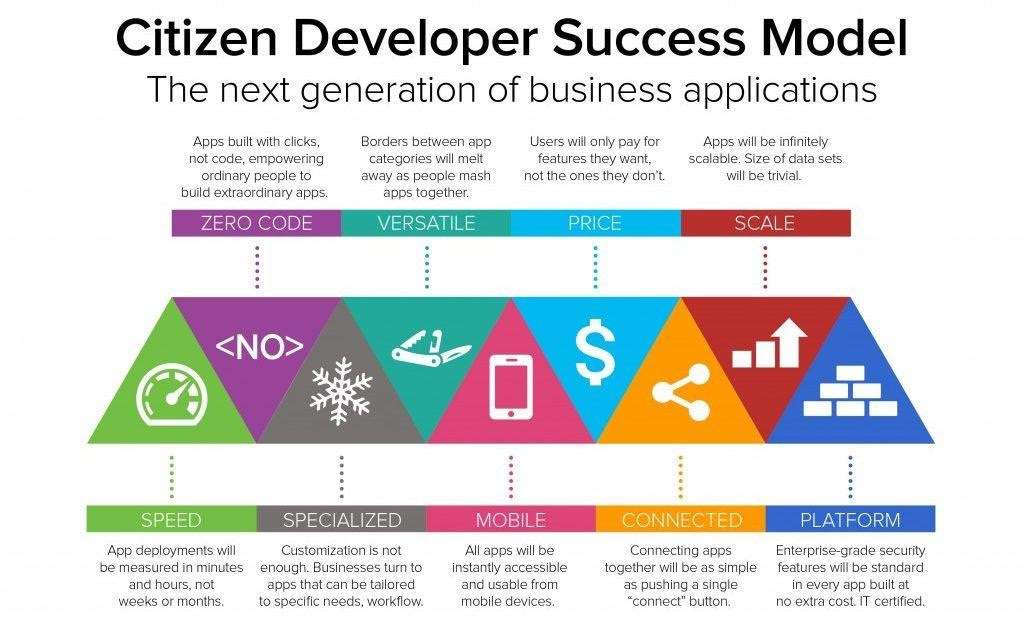
Today, businesses have to solve a huge number of problems: aggressive laws and regulations, new demands from customers, a highly competitive industry, environmental changes — you name it. Creating a specific solution for each of these problems is outside the scope of most IT departments.
The concept of a “citizen developer” came to solve that issue and empower all the employees with the ability to produce their own solutions without needing an IT professional. This doesn’t mean IT is now irrelevant but the opposite.
Citizen development builds a bridge between IT and your other departments and helps them collaborate faster, optimize often, and solve problems more efficiently.For example, let’s say that you’re a sales manager in a large medical clinic.
You discover that your CRM doesn’t provide all the features you need to manage prospects and follow your complex sales process. Here’s where citizen development comes into play.
Instead of hiring a professional developer to build a custom CRM, you could just do it yourself — or have a team member do it, even if that member is a non-dev. With the help of templates, visual modeling tools, data models, and centralized data, you could design a CRM that fits your exact needs, all without writing a single line of code.
This way, you could solve the problem without bothering your IT peers, who might be pretty busy with their own stuff.
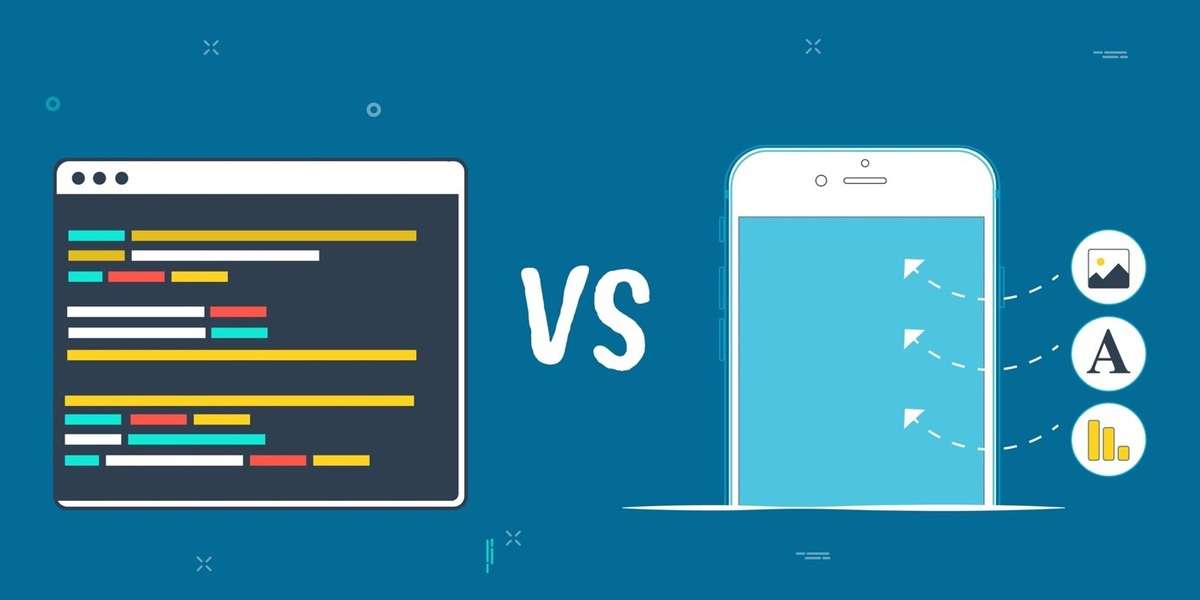
But the process doesn’t end there.
As we stated earlier, no-code platforms help you centralize your work. This means that any relevant stakeholder can oversee all the apps you’re building and make sure they comply with your quality standards.
Once your IT team has more time, they could work on the CRM you built and enhance it to fit such standards.
In short, citizen developers are problem solvers. Their objective is not to build the “perfect” app but to design functional solutions to existing problems in your organization.
Then, IT professionals can work from there and optimize the solutions you created later.
This model of work helps you adapt to changes way faster, which allows you to become hyper-efficient.
The pros and cons of citizen development
Citizen development is a powerful idea — one that can revolutionize your business for the good.
That said, it’s not perfect.
So, now that you understand the basics of this model, let’s explore some of the pros and cons involved in the process.
Pros
Some of the main benefits of citizen development include:
- Build custom apps faster, at a fraction of the cost: citizen developers can build a new application in days, not months, which can reduce your development costs exponentially.
- Increase the operational efficiency of your IT department: when implemented right, no-code platforms can improve collaboration between IT professionals and non-devs.
- Optimize and adapt your processes quickly: no-code technology enables anyone in your organization to find improvement opportunities and build a solution on their own.
- Automate repetitive tasks: citizen development goes hand in hand with AI, which can help you automate repetitive processes and repurpose that time into more productive initiatives.
- Develop a competitive advantage: adapting to constantly changing situations with speed can become a true business advantage.
Cons
Some of the cons of citizen development are:
- Learning curve: even though citizen development is relatively simple compared to traditional development, you need to train your employees on how to use no-code platforms.
- Shadow IT: since virtually anyone can design a custom app, your IT department can lose control over some development processes.
- Questionable quality: creating so many new business applications in a short period can lead to low-quality development.
The good news is that all these challenges can be easily prevented by using the right practices.
In the next section, we’ll guide you through the process of implementing citizen development properly.
What do you need to succeed as a citizen developer?
To get the most out of citizen development, you must understand a few key concepts.
Let’s break them down.
Recognize the role of software in modern organizations
Back in 2011, software engineer Marc Andreessen coined the famous phrase:
“Software is eating up the world.”
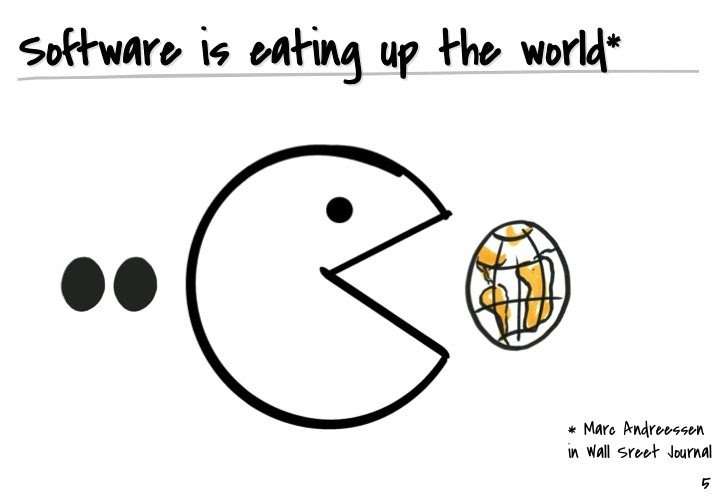
It’s true.
Now almost all organizations are, in some way, in the software business.
Whether you’re a marketing agency, an eCommerce company, or a SaaS provider, the software is an essential part of your organization.
Most of your operations are performed in and through software.
Without a fast and reliable way to manage, optimize, and improve all the software processes involved in your business, you’ll eventually reach a breaking point.
The first thing you need to understand is that citizen development is no longer a luxury but a necessity for modern organizations.
Leverage the right no-code platform
Many platforms claim to be no-code when they are really not.
Sure, you can drag and drop some elements here and there, but that’s pretty much it.
To get the maximum value of citizen development, you need to find a platform that fully immerses you into a no-code experience.
So, what does a no-code platform look like in the real world?
Let’s use monday.com as an example.
monday.com is a fully customizable Work OS where you can build and streamline any type of workflow.
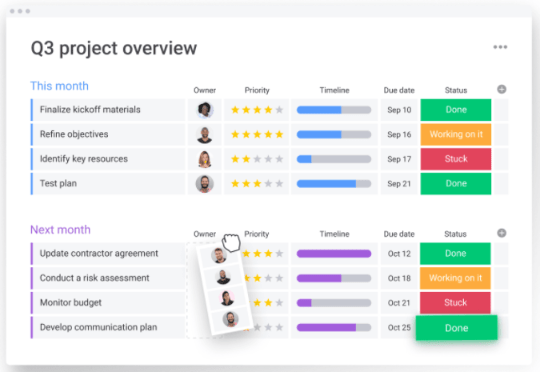
From the start, you get access to a visual interface where everything is “moveable.” We provide you with dozens of LEGO-like building blocks you can arrange at will to build a solution for your needs.
For instance, features that you can utilize to best suit you include:
- Internal tools: build custom features and tools to improve the way your teams work.
- Custom workflows: streamline all the tasks involved in your day-to-day operations.
- Process automation and integrations: automate repetitive tasks and integrate over 40 of your favorite apps in a couple of clicks.
- Data visualizations: design visual data dashboards to understand how your organization is performing.
And much more.
Our platform is so simple and intuitive that anybody can start using it with no training whatsoever.
For instance, let’s say that you want to build a custom content planner for your marketing team.
You could just simply install our content calendar template, adapt it to your needs, set some automations, integrate your favorite tools in a single click, and voila! You’re done.
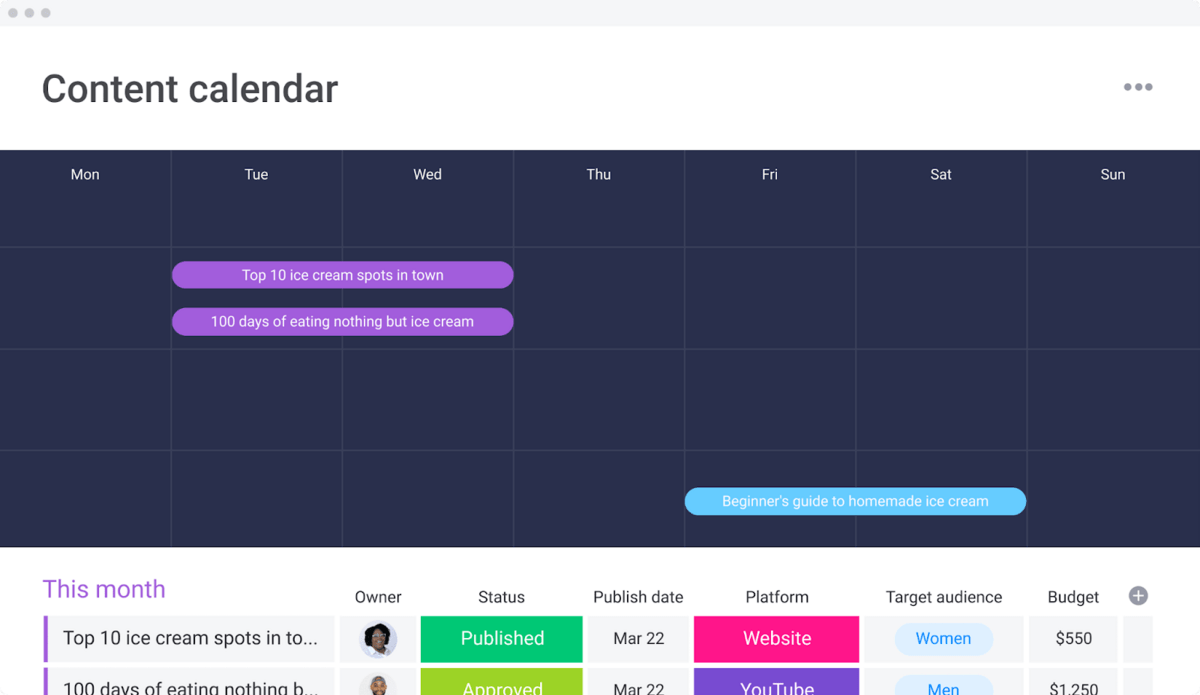
We have 200+ pre-built templates for most of your workflows and processes, including project management, marketing and sales, HR, design, and, of course, software development.
Besides, thanks to our automation center, you can automate up to 250,000 human actions, which can skyrocket your productivity.
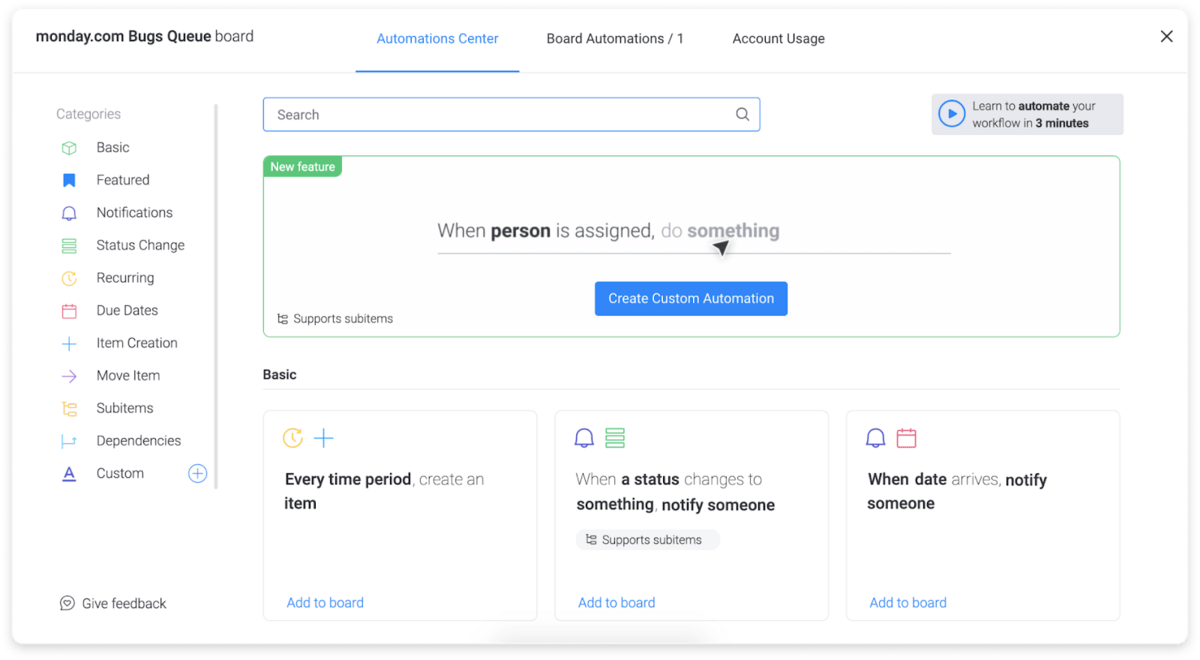
We also provide you with a low-code Apps Framework that has an open API, so your team can build custom features much faster.
And, to be honest, that’s just the tip of the iceberg.
In short, monday.com provides you with an easy-to-use interface where you can build new business applications with ease.
Control shadow IT
The term “shadow IT” refers to any business application that’s built without informing the IT department, and it represents one of the biggest challenges for citizen developers.
When multiple departments can build their own apps, controlling the development process becomes way harder.
To solve this problem, you need a digital workspace that helps you remove silos between departments and centralize all your communication into one place.
This way, stakeholders can be aware of any app that’s being created and make sure it meets the quality standards.
With monday.com, for example, bringing your entire team together is pretty straightforward.
For instance, you could adapt our project requests and approvals template so that every time a team member wants to build an app, your IT department gets involved.
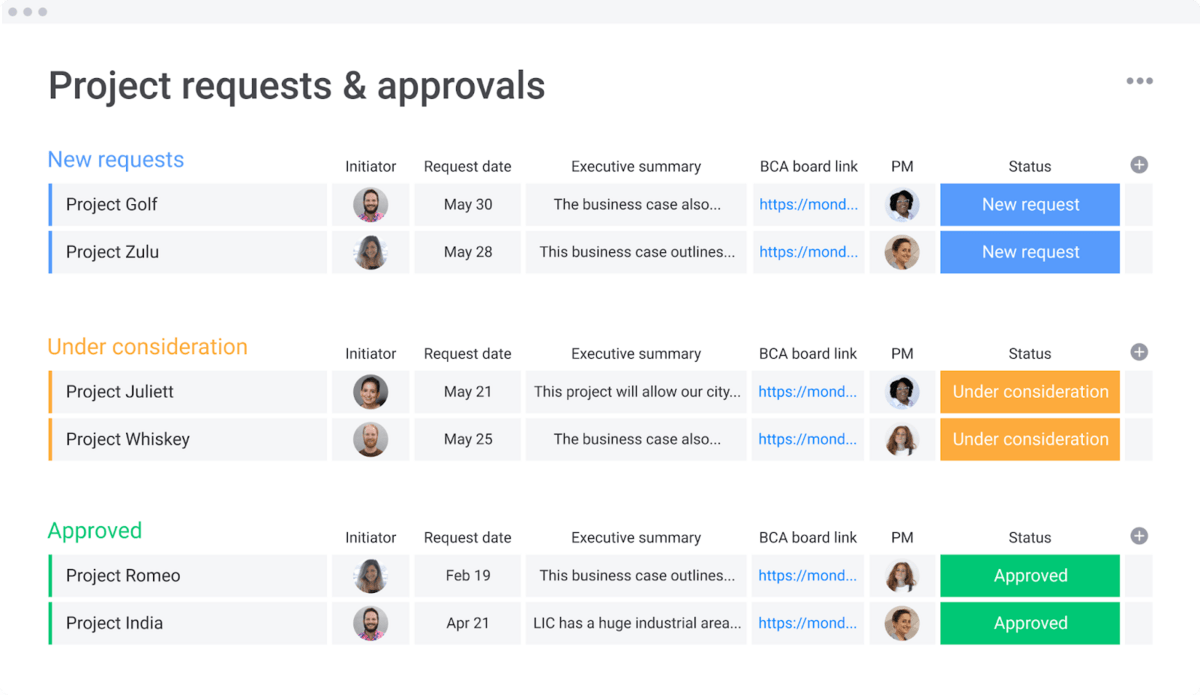
By setting up some automation, this process can run smoothly.
For example, you could build an automation to send an email to a specific team member whenever a new app is being developed.
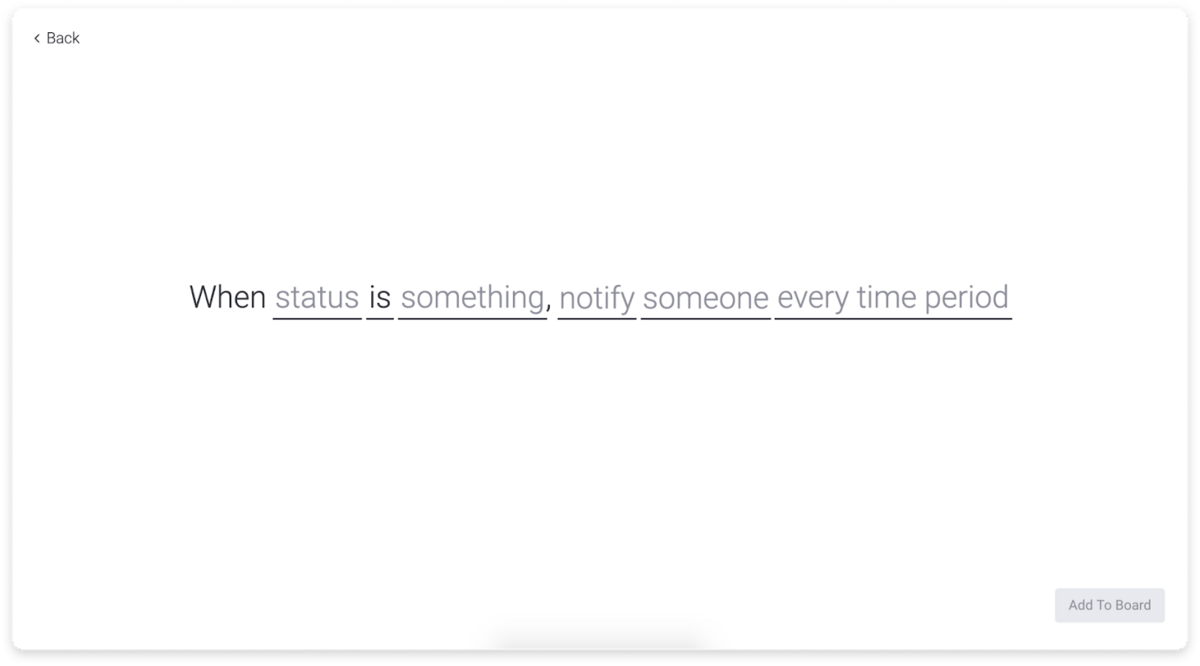
You could set another automation on top of that to assign tasks to team members every time a project is approved.
And this is just one example of what you can do with our platform.
To get a more in-depth understanding of monday.com’s no-code functionality, we suggest you watch this quick video overview:
Citizen development FAQs
At this point, you know what citizen development is and understand the key concepts you need to keep in mind to implement it in your business properly.
To close on a high note, let’s answer some FAQs:
How can you become a citizen developer?
To become a citizen developer, you don’t need formal education. There’s no such thing as a “citizen development degree.”
That said, you do need to develop some skills, including:
- Problem-solving: identifying opportunity gaps in your business and designing custom solutions to fill those gaps.
- Critical thinking: objectively analyzing problems to better manage your resources and solve problems more effectively.
- A solid understanding of no-code platforms: knowing how to use the different features provided by no-code platforms to develop new apps with speed.
- Communication: proactively communicating with stakeholders and making sure they understand what you’re trying to achieve with each project.
Besides, you should have a genuine desire to learn continuously and look for new ways to solve a business problem.
What is no-code development?
No-code development is the creation of software through the use of visual models.
Instead of writing code line by line, you simply drag and drop different elements.
This is possible thanks to a concept called “abstraction.”
Abstraction removes the complexity of writing code from scratch and provides you with pre-built “code snippets” you can use to build the solution you want.
Should organizations feel threatened by citizen developers?
The short answer is “no.”
There are some risks involved in citizen development, such as shadow IT. But by following the right processes, this model helps you become more effective and efficient.
We can confidently say that citizen development will not replace traditional software development — it will only improve it.
Welcome to the future
As organizations become more complex, they need better — and faster — ways to solve their problems and challenges.
Citizen development provides businesses with the opportunity to build custom solutions and applications without solely relying on IT departments for every part of the process.
This helps you work more efficiently and adapt to the constantly changing environment modern organizations deal with.
If you’re looking for a fully customizable Work OS that helps you implement citizen development with ease, then check out monday.com.
To get a better understanding of our Apps Framework, we suggest you read this guide. It’ll help you start on the right foot.

